The Dark Descent: Inanna, Ereshkigal, and the Nature of Death
Featured Article
By Jess Nadeau
The reality of death for all of humanity has always been one of anxiety and uncertainty. For the Mesopotamians, life was to serve and labor for the gods, and death was the destiny of mankind. It was said that the gods fashioned humans from clay, adding the flesh and blood of their own divine bodies. In death, they returned to clay. Where they went was nothing more than a shadow of the earth, a cosmic opposite to the heavens. Far from the living and deep beneath the earth’s surface, it was the land of dust and darkness. And it was in this land that a queen reigned supreme and a sister faltered. In perhaps one of the most treasured epics of the era, The Descent of Inanna tells the story of wrath and justice, a tale that would ultimately define the nature of death through time.
A Land of No Return
What is known of the underworld does not come from a single source; it is a puzzle, pieced together from great epics, rituals, burials, inscriptions, magical texts, omens, and numerous other sources. What is revealed is a place that light cannot reach, where one’s life was neither rewarded nor punished; it was simply where the spirits dwelt. It was like life on earth, albeit dull and lifeless, never meant to be a paradise for the good or a hell for the bad. In the absence of judgment, death rituals may have been the only influence determining one’s afterlife. Offerings were likely made of food and nourishment to appease the spirits and provide them with the sustenance that the underworld could not. Graves, cults, and bodies of the dead also needed careful attention, or else the earth would be plagued by the restless dead.
The underworld went by many names: Kur, Irkalla, Kukku, Arali, Kigal, Ersetu, all depending on the era in which it was spoken, whether it be Sumerian, Akkadian, Babylonian, or Assyrian. All, however, share its dismality. Dust caked on doors and bolts, drifted and choked the air, settling on everything it touched, so much so that it was all the dead had to eat, along with stagnant, murky waters that could only quench the forlorn and forgotten. The underworld was the land of no return, the house from which no one leaves, where the dead lingered without purpose or were clothed like birds with wings. No divine intervention or salvation awaited those who set foot in its domain. But not all hope may be lost; at least one epic spoke of abundant feasts to honor the arrival of a venerated ruler, Urnamma. Perhaps, the underworld had its brief moments of splendor.
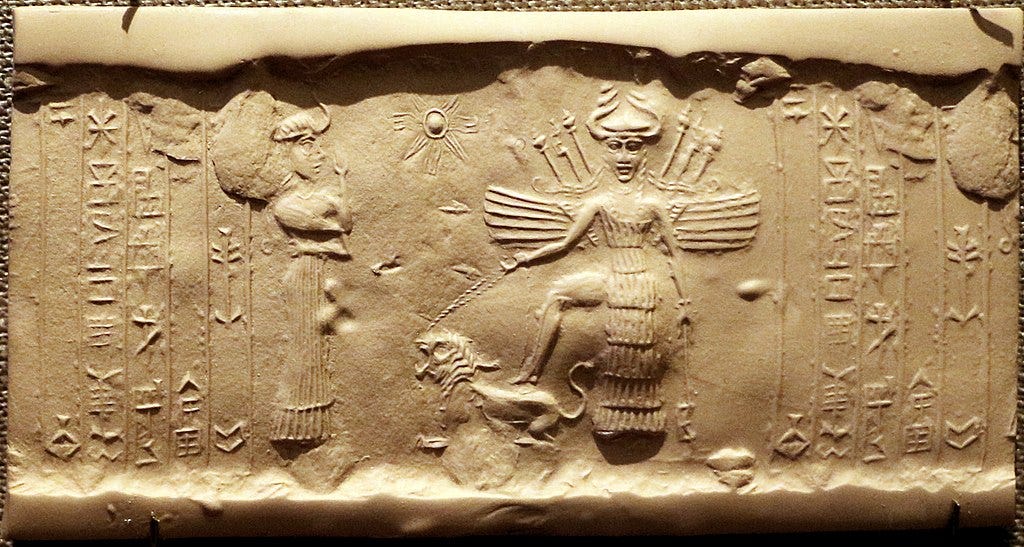
At the center of this dark abyss lies the Great City guarded by immense walls and seven sturdy gates. A community of spirits lived here, but more importantly, the ruler of the underworld. Her name was Ereshkigal, and she remains the only female deity to have ever ruled such a place. Her grand palace sat at the entrance of the Great City, Ganzir. Her close confidant and faithful servant Neti kept watch over her many gates. From her palace, she was the sovereign of souls, Queen of the Dead, of the Night, of the Great (Vast) Below, and the Lady of the Great Place. She was revered and feared. As a steadfast reminder of rites, rituals, and community, her decisions rippled through the underworld.
Ereshkigal needed not to do it all on her own, however. Much like the hierarchical order of the heavens and earth, a divine council met to decree order in the cosmos. Just the same, the Anunnaki assisted Ereshkigal in all her decisions. Her duties kept the dead in their realm, always oblivious to the truths of the afterlife, and kept the living from entering. Eventually, she would be replaced by the god of death, war, and destruction, Nergal. He burned like the afternoon sun in the height of summer, scorching the earth and withering crops. The primal forces of chaos that caused man to destroy and the earth to be devastated without reason were at his will. Before he took the throne in the recesses of heaven’s shadow, he was Ereshkigal’s consort and co-ruler for half the year. And before this, Ereshkigal was wed to Gugalanna, the Bull of Heaven, who unwittingly prefaces our renowned epic of descent, stirring the tides of order and chaos and turning sister against sister.
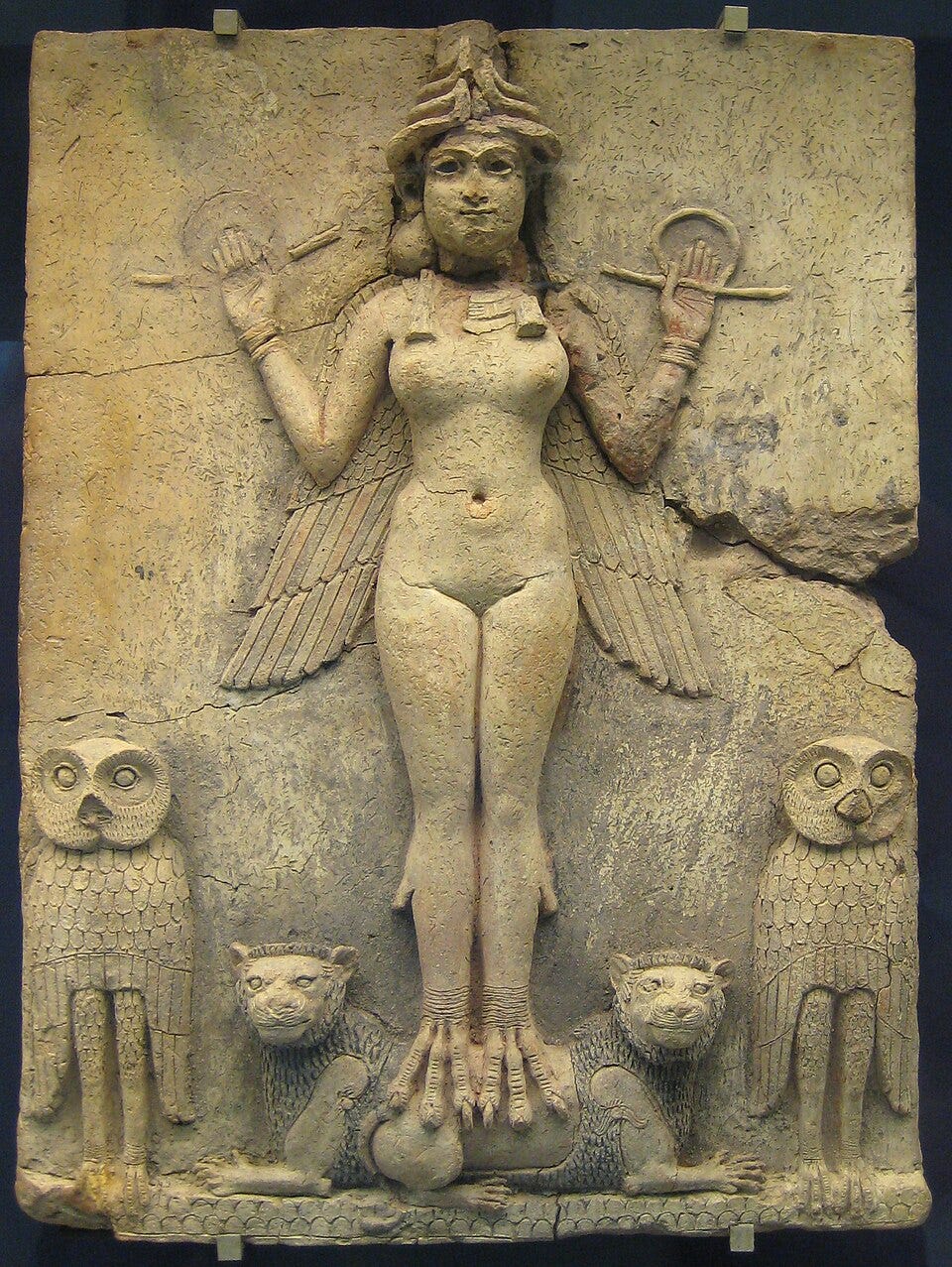
The Great-Hearted Mistress
Ereshkigal’s sister, a beautiful and alluring goddess by the name of Inanna, was later called Ishtar by the Akkadians and Assyrians. She was the goddess of love, sensuality, fertility, procreation, and war. She shone like the brightest star in the evening and morning sky, Venus, emanating an aura that would eventually make her one of the most popular deities in the Mesopotamian pantheon. As one of the earliest deities, originating during the 4th millennium BCE, she is one of the Seven Divine Powers: Anu, father of gods and the sky; Enlil, god of storms and the earth; Enki, god of wisdom, healing, and creation; Ninhursag, mother of gods, fertility, and the earth; Nanna (Sin), god of the moon and night sky; Utu (Shamash), god of the sun; and Inanna, goddess of love.
Though Inanna may sound charming, she was, by all means, an incredibly powerful force. She was fiercely independent, spiteful, jealous, brazenly impulsive, and calculated. Her fame rose to immense proportions when the daughter of Sargon of Akkad, Enheduanna, an Akkadian poet and high priestess, wrote several hymns dedicated to the goddess. It was at this point that Inanna became the Queen of Heaven, the Great-Hearted Mistress, Goddess of fearsome powers, and patron of Uruk. Enheduanna’s hymns echo her power to command, pacify, bless, and destroy. Her body always fitted with armor as she wielded her bow better than any man. She could flood the land, shake the earth, and make the gods fall to their knees.
“The great-hearted mistress, the impetuous lady, proud among the Anuna gods and pre-eminent in all lands, the great daughter of Suen, exalted among the Great Princes, the magnificent lady who gathers up the divine powers of heaven and earth and rivals great An, is mightiest among the great gods—she makes their verdicts final. The Anuna gods crawl before her august word whose course she does not let An know; he dare not proceed against her command. She changes her own action, and no one knows how it will occur. She makes perfect the great divine powers, she holds a shepherd's crook, and she is their magnificent pre-eminent one. She is a huge shackle clamping down upon the gods of the Land. Her great awesomeness covers the great mountain and levels the roads.
Without Inana great An makes no decisions, and Enlil determines no destinies. Who opposes the mistress who raises her head and is supreme over the mountains? Wherever she ……, cities become ruin mounds and haunted places, and shrines become waste land. When her wrath makes people tremble, the burning sensation and the distress she causes are like an ulu demon ensnaring a man.” (A Hymn to Inanna, 1-17)
At Inanna’s cult center in Uruk, temples and shrines were occupied with sacred male and female prostitutes, or a combination of both. To ensure the land remained fertile and to honor those who saved Inanna in her epic, her clergy consisted primarily of transgender individuals, castrated males, women who presented themselves as men, or any variety thereof, neither male nor female. These individuals were believed to have been divinely chosen, metamorphosed by Inanna or Enki. She was also an integral figure in the Epic of Gilgamesh, having tried to seduce him, only to be reminded of the many unfortunate fates of her past lovers. The consequences of rejection led Inanna down a malicious path, one that summoned the Bull of Heaven, opening the earth and swallowing hundreds of men, threatening to open the doors of the underworld and bring the dead to roam the earth. Her callous actions caused the death of Gilgamesh and the bull as they battled for supremacy.
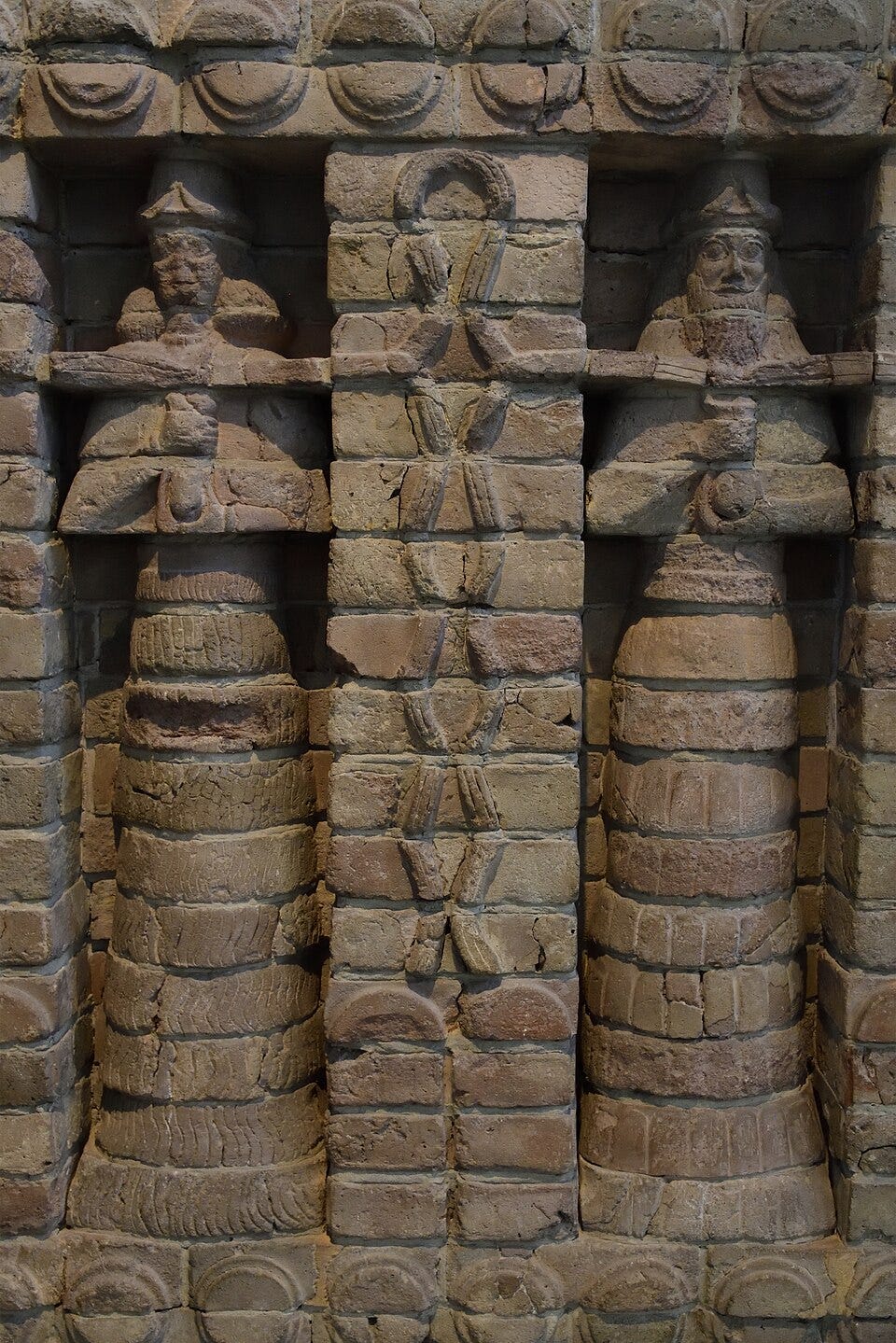
Subsequently, Ereshkigal and Inanna’s relationship suffered. They had always been a bit at odds; Inanna ruled the heavens, love, life, and fertility, while Ereshkigal ruled the dark depths of the underworld. Jealousy, rivalry, and overreach became their shared nemesis. And when Inanna so audaciously attempted to enter the underworld to attend the funeral of Ereshkigal’s beloved husband—the father of her unborn child, whose death Inanna herself was responsible for—the wrath of the underworld descended upon her.
The Descent of Inanna
Written between 1900 and 1600 BCE, The Descent of Inanna follows Inanna through the passageways of the underworld, coming face-to-face with her scorned sister. The goddess arrived exquisitely adorned in her finest regalia: the crown of heaven atop her head, lapis lazuli beads circled her neck, a breastplate guarded her chest, a golden ring, a scepter clasped in her hand, and the powers of the divine seven. Before journeying to her sister’s realm, she asked her dear servant and advisor, Ninshubur, to send word for her rescue if she did not return. Ninusubur agreed.
“From the great heaven she set her mind on the great below. From the great heaven the goddess set her mind on the great below. From the great heaven Inana set her mind on the great below. My mistress abandoned heaven, abandoned earth, and descended to the underworld. Inana abandoned heaven, abandoned earth, and descended to the underworld.”
Entering the dusty domain, Inanna eagerly pushed and shoved at the main gate, Ganzir, demanding to be let in to attend the funerary rites of the late Gugalanna and receive the generous libations offered at his wake. When Neti learned who expected entry, she hastily made way to Ereshkigal. The goddess seethed with discontent; slapping her thigh, her teeth sank into her lip. Tightly bolt every gate, Ereshkigal would reply. If Inanna wishes to pass through the underworld, she would have to surrender her royal regalia. And so, as she reached each gate, Inanna was forced to give up one of her prized possessions as an offering. Each time, she asked in annoyance, “What is this?” Neti’s response remained the same, “Be satisfied, Inana, a divine power of the underworld has been fulfilled. Inana, you must not open your mouth against the rites of the underworld.”
There was little left to give by the time Inanna reached the throne room of her sister. Bowing low before the throne, the last of her wares were removed and taken away. Naked, she approached the throne, requesting Ereshkigal to stand. Once the queen did, Inanna stole the seat but was quickly met by her sister’s council, the seven Anuna judges (Anunnaki). Closing in on her, the council stared with glaring, menacing eyes.
“They looked at her—it was the look of death. They spoke to her—it was the speech of anger. They shouted at her—it was the shout of heavy guilt. The afflicted woman was turned into a corpse. And the corpse was hung on a hook.” (Black, et al. translation)
Inanna’s rotting flesh hung high from the walls of the throne room for three days and three nights. Realizing the fate of Inanna, Ninshubur rushed to the goddess’s father, Enki, pleading for help. Two Galla, neither male nor female, were sent to the underworld to retrieve the corpse of the once radiant goddess. They clung like flies to the walls, eyes fixed on Ereshkigal’s every movement, waiting for the opportune moment. When they noticed her sobbing, reeling in the pains of labor for a fatherless child, they decisively appeared before her. Offering her comfort and solace, Ereshkigal extended her generosity by offering a gift of her own: a river with its waters or a field of grain, perhaps. They kindly refused and asked for the body that hangs; Ereshkigal complied.
As soon as Inanna’s body touched the floor, the Galla sprinkled her with life-giving water and plants. She rose anew. Making their way out, Inanna was quickly seized by the Anuna. No one has ever escaped the underworld unscathed; someone must take her place. Demonic Galla strode forth from the gloom to accompany her to the world of the living and take what was rightfully theirs. They tried to take her servants and her children, but Inanna begged them to spare those who showed mourning for her. It was Inanna’s husband, Dumuzi, however, who showed no signs of mourning. She found him, seated gloriously upon his throne with his grandiose garments and jewels. Maddened by rage, Inanna offers her husband to take her place. In his panic, Dumuzi called out to Utu, the god of the sun. His body lurched forward into a slithering serpent, but was captured nonetheless. His sister, Geshtinanna, would soon valiantly offer herself to take his place. It was decided that the siblings would share in this fate; for half the year, Dumuzi resided in the underworld, and for the other half, Geshtinanna. The epic ends with a single line: “Holy Ereshkigal—sweet is your praise.”
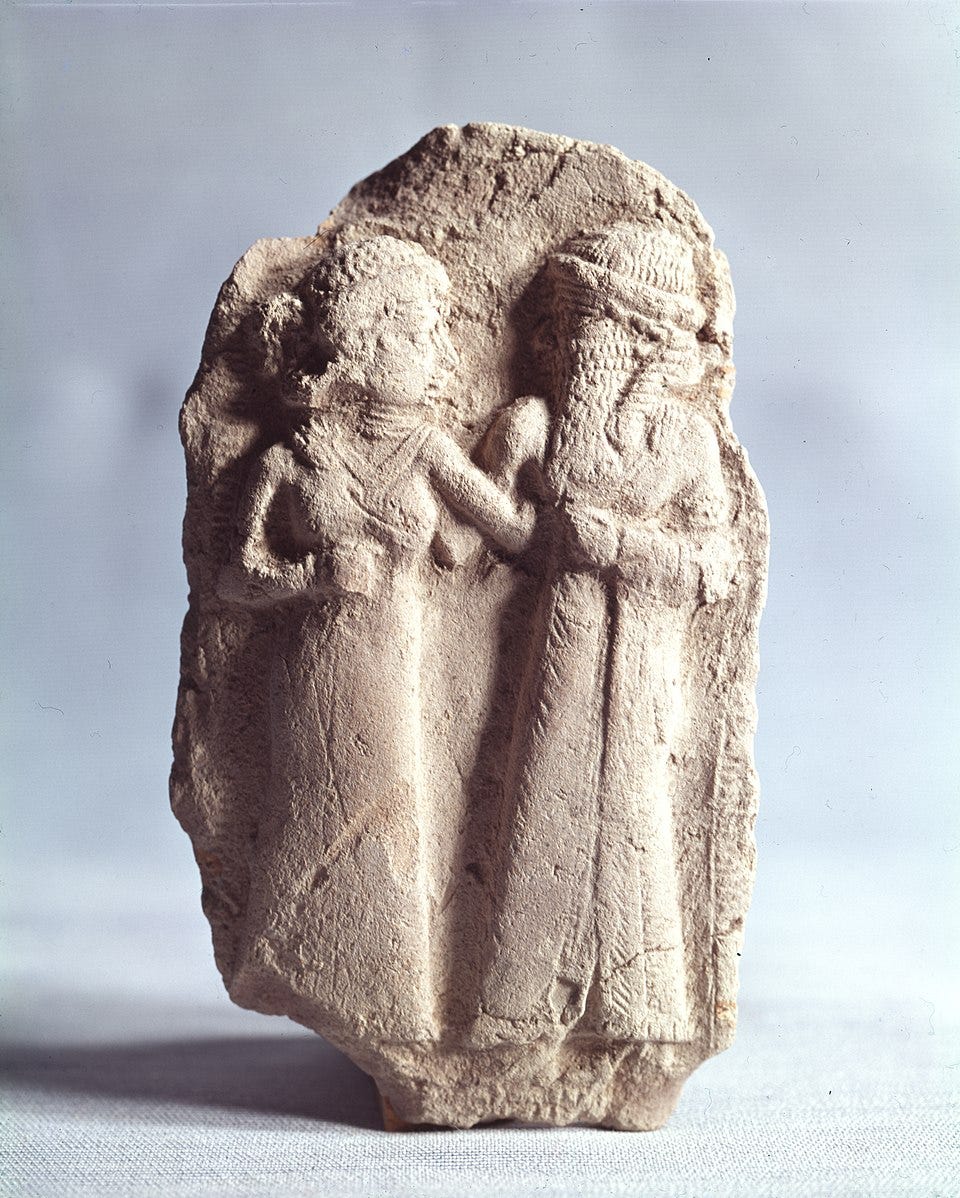
Death’s Prevailing Order
As one of the oldest examples of a katabasis, a motif that follows a hero’s journey into the underworld and back, Inanna’s descent, as well as Gilgamesh and other Sumerian tales of the underworld, had a lasting impact on mythological stories thereafter. It can be seen in Demeter and Persephone, Odysseus, Orpheus, Osiris, and many others throughout the ancient Mediterranean world. These tales of descent so often explore the uncertainties of death, its permanence, or convey a moral message, secret knowledge, or reinforce cultural beliefs and obligations that honor the dead. Inanna’s story was written well before Gilgamesh’s epic (2150-1400 BCE); yet, one cannot put a date on oral history and tradition. It is quite likely that Gilgamesh’s and Inanna’s stories were always connected.
Modern interpretations of Inanna paint her as an admirable heroine, traveling through the underworld as a symbol of rebirth, from a Jungian perspective. What these modern ideas imply strays far from the reality of Inanna. They do not take into account the time in which these stories were told, nor Gilgamesh in any conceivable way. To fully understand what Inanna truly represented, context must be considered, and context is littered throughout the texts and Inanna’s worship. The ancients were eternally curious and fearful of death, as many still are. Funerary rites, graves, and iconography appeared to utilize Inanna as a way to navigate and avoid peril while transitioning to their new realm of existence, their ultimate fate (the destiny of mankind).
In Nimrud, an ancient Assyrian Queen’s tomb housed an extraordinary collection of prized jewels among other grave goods. These elaborate offerings are reminiscent of the possessions Inanna sacrificed to appease Neti and pass through each gate. More interesting still, the seven gates she passed and the three days and three nights she was held—with the seventh being freed—also correspond with royal funerary rites, which lasted up to seven days. In this way, Inanna, though she traveled to the underworld with malice, gave people a better understanding of the underworld and what might befall them if not navigated accordingly.

Inanna’s earliest incarnations suggest that she was likely a goddess of agriculture, the cyclical nature of growth and renewal throughout the year. Her sacred prostitutes represented those who rescued her from the underworld, returning her to the world of the living. Additionally, in early Sumerian society, the high priest of her temples would engage in a sacred sexual marriage ritual with a priestess in the image of Inanna to ensure the fertility of the land, just as her prostitutes did. Dumuzi (Tammuz) was a fellow deity of agriculture and shepherds, and his sister, Gestinanna, was connected to agriculture, fertility, dream interpretation, and scribes. In these ancient agrarian societies, like Mesopotamia, agriculture was central to life, survival, and prosperity; therefore, religious acts and numerous deities were required.
Dumuzi and his sister were chosen to represent the seasons, much like Persephone and Demeter. Inanna, as a prominent and elder deity, was far too consequential to the land. Her later incarnations, encompassing love and the heavens, seemingly became intertwined with her early aspects, making her that much more significant, but it also speaks to her personality. In her stories, she can be dangerous, rash, and impulsive. She ruled over the fluctuating land, fickle love, war, and the precariousness of living. In her, the uncertainties of life in ancient times are revealed, the chaos and unpredictability from one season to the next, from the wars and invasions that plagued the region, or among foolish lovers. Death, and thus Ereshkigal and her domain, were the epitome of a stable, inevitable, and inescapable order. This is why Ereshkigal was praised at the end of the epic. In chaos, order prevails.
Featured image: Cropped image of the Burney Relief or the Queen of the Night, depicting either Ereshkigal or Inanna (Ishtar), 19th-18th century BCE, Iraq. (British Museum, CC0)
References
Choksi, M. 2014. Ancient Mesopotamian Beliefs in the Afterlife. World History Encyclopedia. Available at: https://www.worldhistory.org/article/701/ancient-mesopotamian-beliefs-in-the-afterlife/
Mark, J.J. 2010. Inanna. World History Encyclopedia. Available at: https://www.worldhistory.org/Inanna/
Mark, J.J. 2017. Ereshkigal. World History Encyclopedia. Available at: https://www.worldhistory.org/Ereshkigal/
Mark, J.J. 2011. Inanna’s Descent: A Sumerian Tale of Injustice. World History Encyclopedia. Available at: https://www.worldhistory.org/article/215/inannas-descent-a-sumerian-tale-of-injustice/
A Hymn to Inanna. Electronic Text Corpus of Sumerian Literature, Oxford University. Available at: https://etcsl.orinst.ox.ac.uk/cgi-bin/etcsl.cgi?text=t.4.07.3#
Black, J.A., Cunningham, G., Fluckiger-Hawker, E, Robson, E., and Zólyomi, G. 1998. Inanna’s descent into the netherworld: translation. The Electronic Text Corpus of Sumerian Literature, Oxford University. Available at: https://etcsl.orinst.ox.ac.uk/section1/tr141.htm
Hussien, M.M. Translated by Altaweel, M. 2016. Nimrud: The Queen's Tomb. Iraqi State Board of Antiquities and Heritage & The University of Chicago Institute for the Study of Ancient Cultures (formerly The Oriental Institute of the University of Chicago). Available at: https://isac.uchicago.edu/sites/default/files/uploads/shared/docs/misc-2016-Nimrud-Queens-Tombs-web.pdf



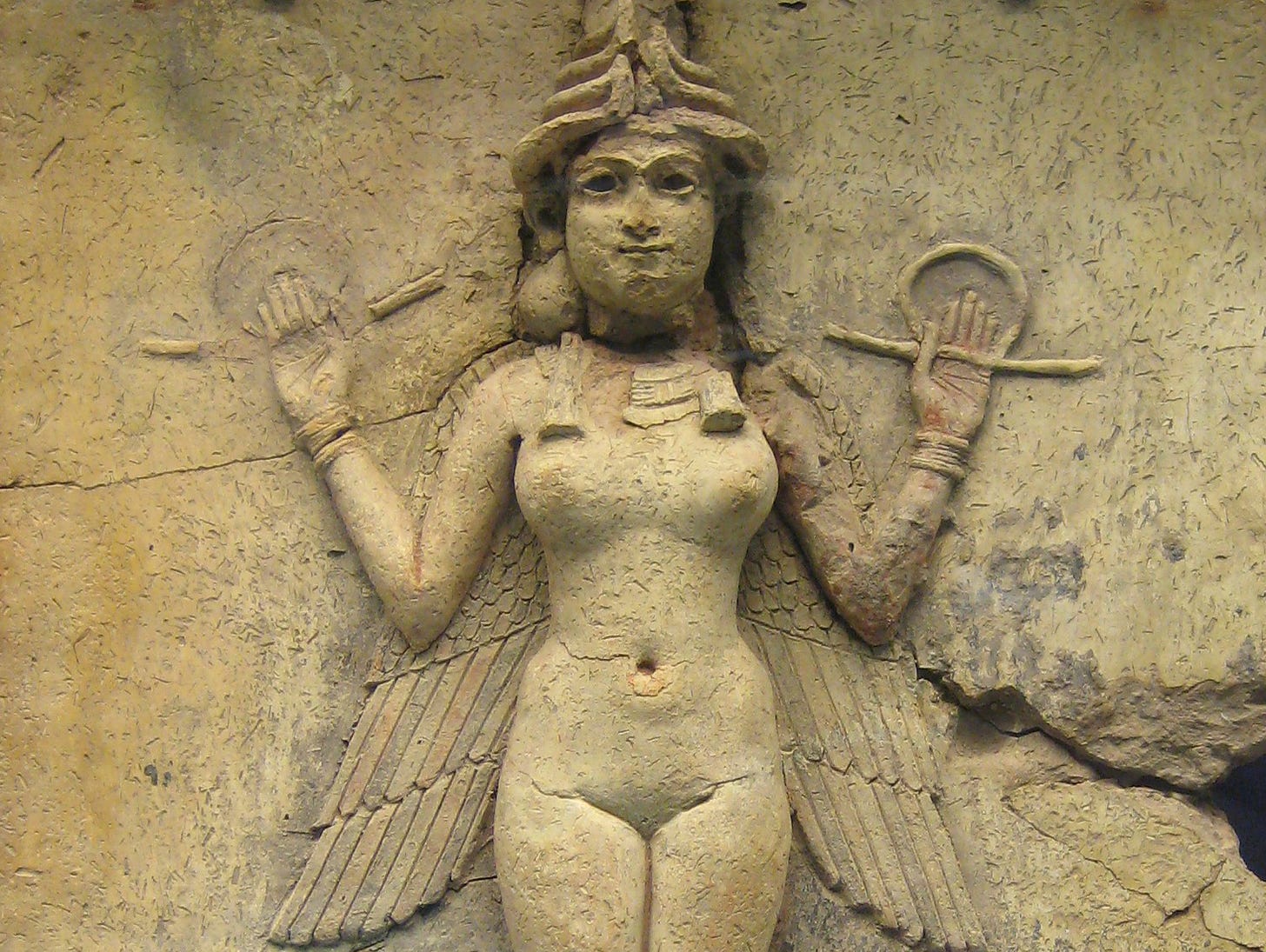

Excellent read. What is your hope for us, your reader? After reading & understanding these Epic Tales of ancient times?
Interesting to read of the history behind our journey on earth as humans. And how our consciousness and psyche search for meaning in life. ❤️🔥 following 🙏🏽
This was stunning—both the storytelling and the historical depth. I’ve always been fascinated by descent narratives, and your framing of Inanna and Ereshkigal’s story as layered with power, grief, and transformation really resonated. As someone doing public history work on women’s lives and silences in the archives, this kind of myth feels especially powerful. Subscribed—thank you for this haunting and beautiful exploration.